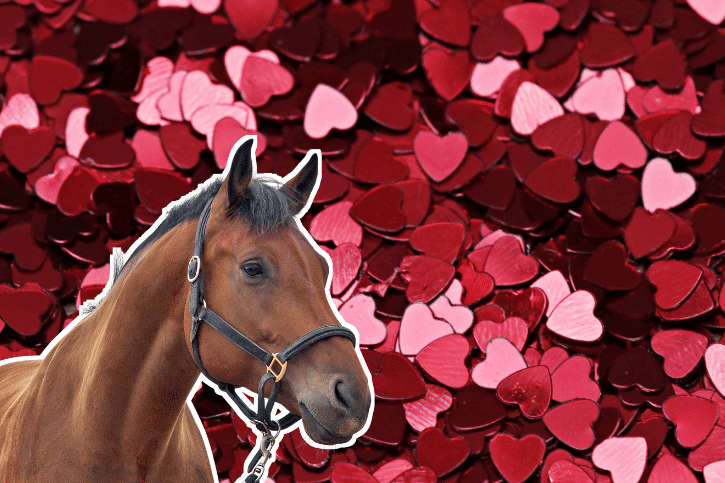How Do Horses Mate?
Breeding horses can be harder than you might imagine, and it’s always important to know that the courtship rituals of most animals are complex than we think.
Recently, I was talking with a friend who was explaining the whole process and what they had witnessed after successfully mating two horses for the first time, and I was amazed by the grace and beauty of the whole process.
It’s a question I do often get asked, so I thought I would compile some research and answer the question.
So, how do horses mate?
Horses mate primarily by courtship from the male. The male must dazzle and impress the female with their strength, prowess and grace, and if the female is receptive, she will then lift her tail and allow the male to mount her. This is a simplification, but that’s the basic gist of it.
So, it’s actually a very beautiful thing to see, even though we might instinctively avert our eyes.
Breeding is a perfectly natural part of life for animals, and there’s nothing taboo about it for them.
Let’s take a more detailed look at the process, and how horse breeding works in general.
What do horses do when they mate?
Naturally, male and female horses do different things when they’re ready to mate.
Let’s first look at the breeding behavior of the mares.
Mares have a breeding season, and during this season, mares will cycle many times until they conceive.
During their heat, they are most receptive and show intense sexual behaviors.
These might be frequent urination, squatting or straddling, raising their tail to display the clitoris or even lay themselves against a fence to show their readiness.
For the mare, it’s important that they show the stallion when they are most receptive to have the best chance of conceiving.
Stallions also have a few ways of showing their readiness.
The classic mating behavior from stallions is called the flehmen response, in which they lift their head back, their nose into the air and curl their upper lip in a smile.
This will be as a direct reaction to mares displaying behavior that shows they’re ready.
During breeding season, stallions are much more aggressive and hyperactive.
In the wild, herds of horses would typically be one male with many females.
They will also tease the mares to check for their readiness, like vocalizing, bumping into the mares, even smelling or biting them.
Why do horses fall after mating?
For many horses, falling after mating is quite normal, more typically being the mare that falls over.
This is particularly common in horses that have no mated before.
They can be overwhelmed by the aggressive stallions and need to fall to the floor to relax and let their energy and heartrate return to normal.
They can also fall due to a hormonal imbalance.
Hormones regulate many processes in the horse’s body, so if there is an imbalance as a result of mating, it can cause them to lose their balance.
The estrous cycle, that is the period when the mare is ovulating, often causes these imbalances as well; it’s not just the mating itself.
Be careful and aware of this, as it is normal, and sometimes the advice is to consult a vet if your mare doesn’t fall after mating.
Hormonal stress can be a big problem, and falling over is one way to rebalance some of those issues.
Always keep a very close eye on your horse when breeding.
How do wild horses mate?
The actual process of mating in the wild is pretty much the same, except that, as I said, the typical herd consists of one male and many females.
Often, bands of wandering females will seek out new mates.
Even if there are other males in the herd, it is always and only the most dominant male who breeds.
He will breed with every female in heat, thus passing his genes on the most.
He can be challenged by other males, either outsiders or members of the herd.
But while he is there, he is the one who mates.
The courtship rituals are much the same, with any number of behaviors showing that a horse is ready to mate.
The only real difference is that one male dominates all the breeding.
Do horses mate with their family?
The practice of horse inbreeding is fairly common, since breeders want to keep all the most desirable traits within the lines.
However, horses are highly social animals with complex social minds, so they recognize their own family and offspring much better than we might imagine.
For that reason, horses typically will not mate with closely related family members, especially if they’ve known them since infancy.
In captivity, it can be achieved and horses will mate with their relatives and offspring, but the practice is generally frowned upon for a lot of reasons.
Horse mating is a complex process, then, sometimes just as complex as our own rituals.
Horses have social minds and they need to get to know other members of their herd in order to mate with them.
If you’re having trouble breeding horses, you might need to just let them do their own thing for a while.
Get to know each other, get accustomed, and you’ll likely have better results.
In any case, horse breeding is not an easy thing to do and it requires patience and knowledge.
